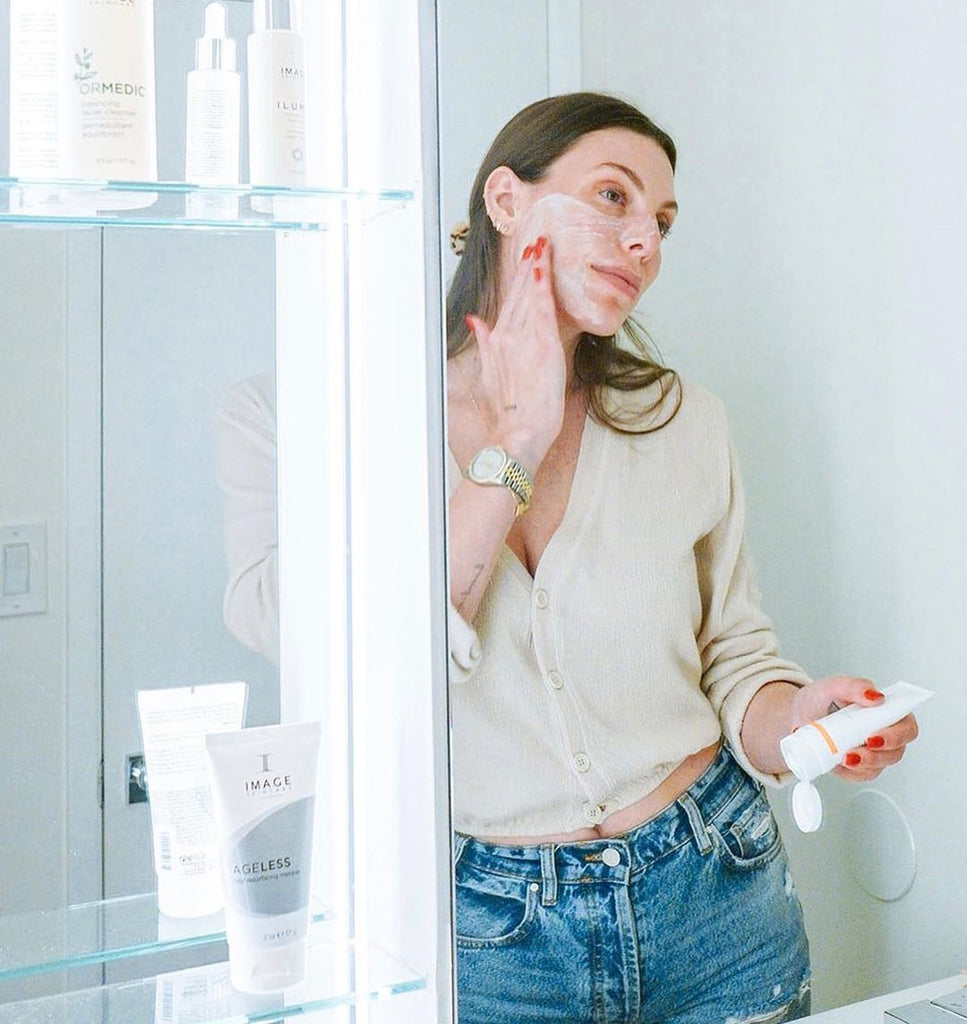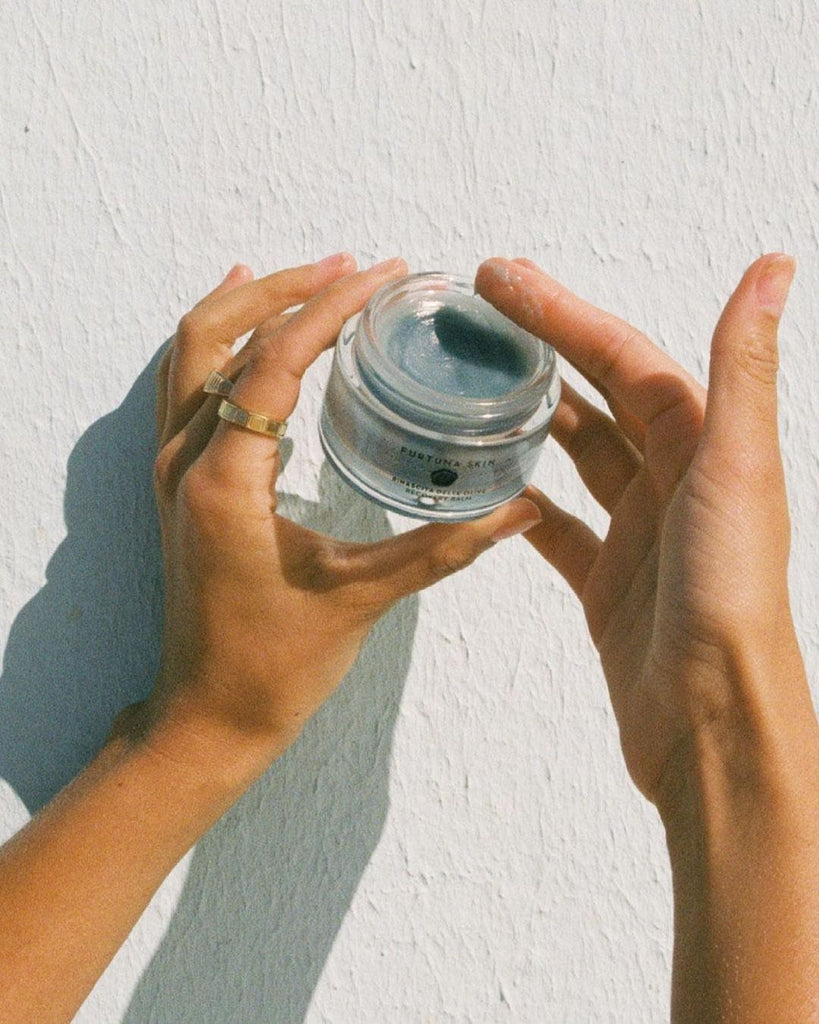Those annoying brown spots that show up on your face, hands, and chest in your 30s and older are known as liver spots or sunspots. "These spots are caused by overactive melanocytes (the area in your skin that creates pigment) Sun is a primary factor for these spots as it accelerates pigment production in the skin," says Candace Marino.
Though spots on the skin are most frequently caused by sun exposure, they aren't always; some brown spots on the face (called "melasma") can be caused by a surge in hormone levels due to pregnancy, oral contraceptive use or hormone replacement therapy (HRT) during menopause. Unlike sun spots, melasma spots tend to fade once hormones moderate. A dermatologist can diagnose melasma by using a special light.
"The best prevention for liver spots is aggressive sun protection starting from a young age," says Dr. Jason Miller. He recommends broad-spectrum sunscreen, "especially physical blocking agents with zinc and iron oxide," and sun protective clothing such as shirts, hats, and sunglasses.
Brown spots are mainly a cosmetic problem—they cause no health risks—but they can be annoying. There are ways to tone them down and camouflage them. Read on for esthetician-approved prevention and treatment options for liver spots.
MEET THE EXPERT
- Candace Marino is a celebrity esthetician known as The LA Facialist. Her impressive client list includes the model Miranda Kerr, the singer Grimes, and many more.
- Dr. Jason Miller of Schweiger Dermatology Group is a board-certified dermatologist specializing in medical dermatology, including skin cancer removal, and cosmetic dermatology.
01: STAY OUT OF THE SUN
The best way to prevent liver spots from cropping up it the first place, according to Marino, is to wear SPF. "The number one complaint I have from my more mature clients is 'I wish I stayed out of the sun,'" she says. "Once the damage is done, it’s extremely hard to repair. Not only does the sun rapidly break down collagen and pigment, it destroys the texture and radiance." Marino recommends staying out of the direct sunlight and skipping the tanning bed.
02: WEAR VITAMIN C SERUM
Alto Defense Serum™ 30ML
"As a rule of thumb, people should be using a vitamin C serum daily to protect the skin from the environment and the sun," says Marino. "It’s like an insurance policy for your SPF." A vitamin C skincare product "coats the cells and helps them fight off the free radicals that enter the skin that can create pigment." Marino's favorite vitamin C-based products are iS Clinical Pro Heal ($155) and SkinBetter Alto Defense Serum.
Dr. Miller seconds the recommendation, noting that products containing vitamin c, Kojic acid, and niacinamide can be "effective in helping to decrease pigment."
03: TRY A CHEMICAL PEEL
TRIPLE BERRY SMOOTHING PEEL
Glycolic acid peels administered by a doctor work by removing the top layer of skin. You may need to be treated more than once to see the best results. Marino's go-to treatment for this purpose is called Cosmelan. "It helps suppress pigment production while lifting dark spots from the skin," she says.
"I call Cosmelan a Xanax for the melanocytes, because this compound shuts off the skin's ability to create pigment by blocking an enzyme called tyrosinase, which is a primary component in pigment production," Marino explains. "At the same time, this peel contains a high dose of retinol, known for its rapid cellular turnover rate, which helps to lift pigment from the skin to reveal a more unified complexion."
04: SEE A DERMATOLOGIST FOR A LASER TREATMENT
Ablative laser resurfacing is perhaps the most effective (and costliest) way to remove brown spots. You get these done in a dermatologist's office.
Laser treatments target the melanin in your skin and are highly effective. The top layer of skin where the spots are is removed via lasers in a procedure that takes about 20 minutes. Scabs will form within 24 hours on the treated area. Once the procedure is over, you can use Vaseline on the spots to protect them and you'll need to stay out of the sun.
You'll find your spots will have faded with the treatments and some may disappear. The best news is once the skin heals, your skin should be much smoother and sunspot-free. Dr. Miller notes that these treatments are "typically safer for those with lighter skin types," so those with deeper skin tones may want to steer clear.
05: TRY OVER-THE-COUNTER SKIN LIGHTENING CREAMS
Even Tone Correcting Serum
OTC skin lightening creams can be effective in lightening your brown spots. Look for products with 2% hydroquinone in them. Popular over-the-counter creams include Porcelana ($9) and Esoterica Fade Cream ($31). Apply these to your brown spots twice daily. These should help lighten your brown spots, but they likely won't go away completely.
"Another great product for pigment prevention is Even Tone serum from SkinBetter Science," notes Marino. "It is a pigment inhibiting and evening serum that helps to brighten and unify the complexion."
Of note, hydroquinone is a fairly controversial ingredient. It isn't always safe for darker skin tones, and violates the Byrdie Clean Beauty Pledge. "Hydroquinone on darker skin can cause some lightening of the normal pigmentation as well as the liver spots, leading to a more blotchy final result," Dr. Miller cautions. "In rare cases, a condition called exogenous ochronosis (unexpected dark spots in the area treated) can occur if hydroquinone is used for too long." As with introducing any new ingredient or treatment to your skincare routine, consult a dermatologist before starting a hydroquinone regiment.
06: TALK TO YOUR DERM ABOUT PRESCRIPTION STRENGTH CREAMS
Prescription-strength creams contain 4% hydroquinone and are arguably more effective than the OTC versions. But they are also harsher on your skin. Dr. Miller says, "These can work a little faster, but also may be more irritating, so should be monitored by your dermatologist." Popular products for this purpose include Obagi Clear, Glyquin, Tri-Luma, and Solaquin. Usually, anything over 2 percent hydroquinone requires a prescription.
Some doctors prescribe Tretinoin to combat sunspots. Tretinoin is a form of Vitamin A and is used to improve the appearance of fine lines, wrinkles, and sunspots. It comes in many brand forms including Renova, Retin-A, Avita, Retacnyl or Stieva-A. There are also generic versions available that may cost you less money.
This article was originally published on byrdie.com.



